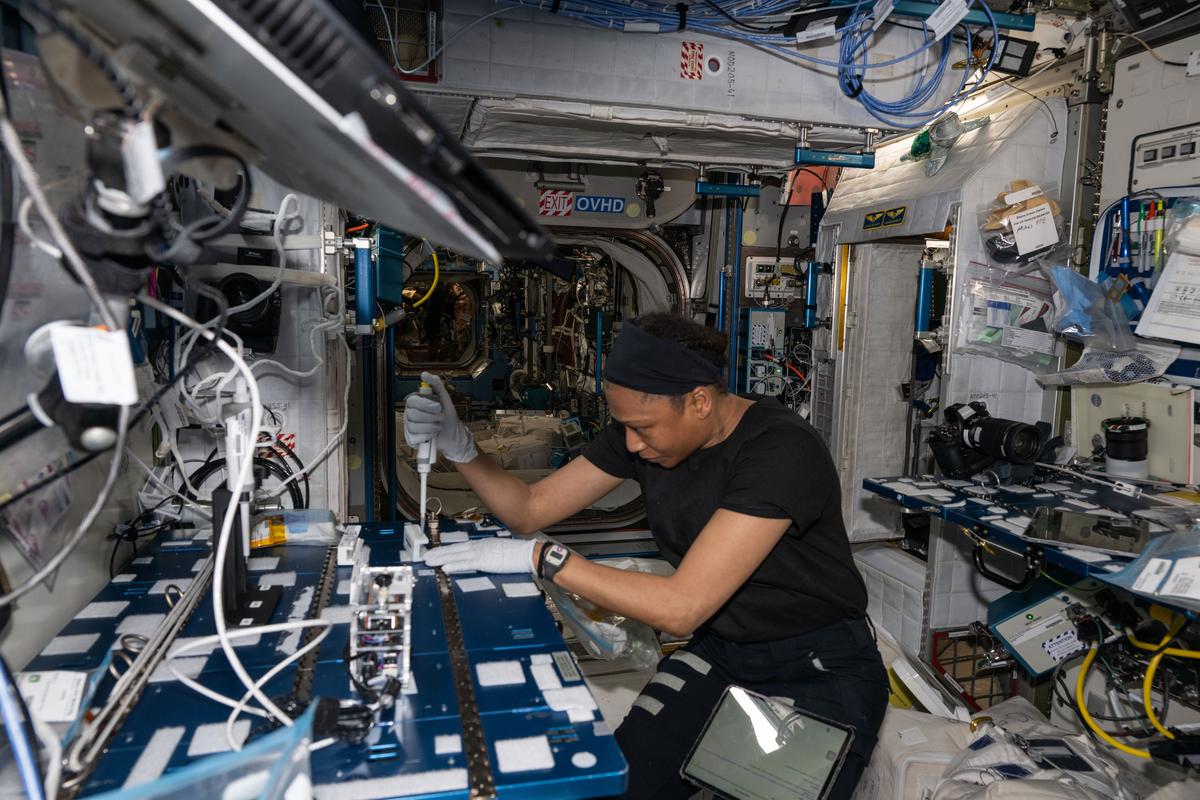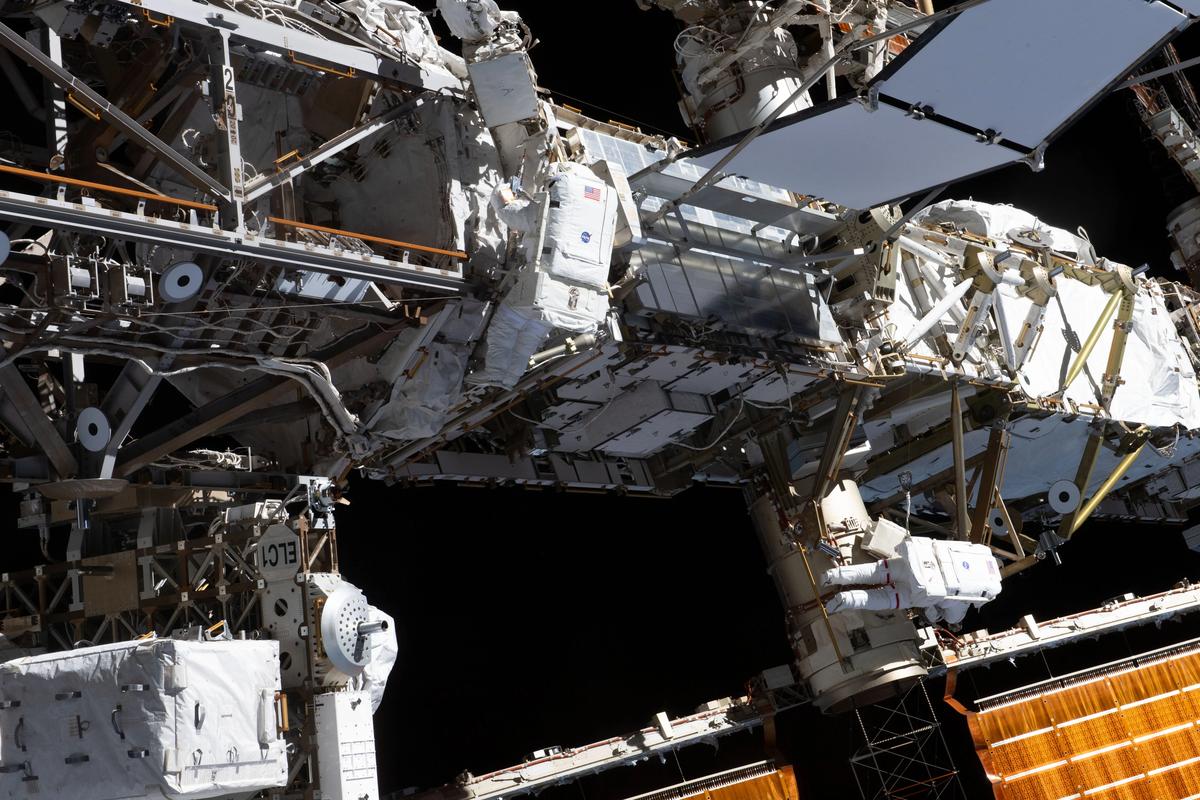Barry Wilmore and Sunita Williams’s job was simple when they took off to the International Space Station (ISS) on June 5. They were to test-fly the Boeing Starliner crew capsule for the first time with a human crew, assess its performance (including its manual controls), dock with the ISS, and return to the earth in about a week.
But what was supposed to be a straightforward eight-day mission has since turned into an eight-month opera, with NASA now indicating the two astronauts will return only in 2025. Starliner’s helium leak and malfunctioning thrusters have caused this delay. While Boeing remains optimistic, it doesn’t look like the duo will return to the earth onboard Starliner..
ISS’s current occupants
Nine crew members are currently aboard the ISS as part of Expedition 71: Williams, Wilmore, Oleg Kononenko, Nikolai Chub, Tracy Caldwell-Dyson, Matthew Dominick, Michael Barratt, Jeanette Epps, and Alexander Grebenkin.
Kononenko and Chub arrived at the ISS onboard the Soyuz MS-24 spacecraft as part of Expedition 70 and stayed on for Expedition 71. Caldwell-Dyson joined the ISS crew on March 25 this year, aboard Soyuz MS-25. All three are scheduled to return on September 24 onboard Soyuz MS-25.

Expedition 71 flight engineer Jeanette Epps extracts DNA samples from bacteria colonies for genomic analysis onboard the ISS’s Harmony module. The research work may help researchers understand how bacteria adapts to weightlessness and develop ways to protect space crews and humans on the earth.
| Photo Credit:
NASA
Dominick, Barratt, Epps, and Grebenkin arrived at the ISS as part of the SpaceX Crew-8 onboard the Dragon Endeavour on March 5, to join Expedition 71. They are also set to return to Earth in September 2024 using the same craft.
As Expedition 71 prepares for its return journey, its crew will hand over the space station to the members of Expedition 72, which will begin on September 24 with a seven-member crew.
Williams and Wilmore should have left the ISS before Expedition 72 began. Thanks to Starliner’s malfunctioning thrusters, they are currently extending their stay at the ISS.
Supplies to the station
Plenty of food and other supplies are available on the ISS. They were recently restocked, too. On August 14, the Progress MS-28 (a.k.a. Progress 89P) cargo resupply ship launched from the Baikonur Cosmodrome in Kazakhstan carrying about three tonnes of food, clothing, fuel, medical and hygiene supplies, and scientific equipment to the space station. This included 950 kg of propellant, 420 kg of water, and 50 kg of nitrogen to replenish the station’s atmosphere.
Almost 50% of the oxygen from exhaled carbon dioxide is recycled. More oxygen is produced by splitting water into hydrogen and oxygen using electricity generated by solar panels. The main challenge is the smell: body odour can linger in the confined space of the station, making the air unbreathable. To address this, nitrogen from the earth is mixed with the oxygen produced in the station to create fresh air.
A week earlier, on August 4, the Cygnus NG-21 American cargo spacecraft had delivered 3.8 tonnes of cargo and supplies to the ISS, including 1,021 kg of crew supplies (such as food and clothing), 1,220 kg of research equipment, 43 kg of spacewalk equipment, 1,560 kg of hardware for ISS repair and maintenance, and 13 kg of computer resources.
With these replenishments, there is no shortage of essential items such as food, water, oxygen, and other supplies to meet the additional demands.

What the astronauts wear
The space station doesn’t have laundry. In its 22º to 25º C conditions, the astronauts don’t sweat much either and there is hardly any dust. As a result, clothes don’t become dirty even if worn for weeks.
The crew changes exercise gear weekly. Inner clothing is worn once every few days, and shirts, tops, pants, and trousers are worn for weeks. Discarded clothing is stored in a cargo ship along with other refuse generated on the station. When a new resupply ship arrives, the old cargo ship is detached and re-enters the earth’s atmosphere, where it safely burns up.
With two resupply ships docking with the ISS in just weeks, NASA will surely have sent the necessary replacement articles of clothing for Willians and Wilmore.
Jostling for space
The ISS is as big as a six-bedroom villa yet is equipped with only seven permanent sleeping pods. When extra members arrive, there are not enough beds for everyone.
This is not a new problem: there are often more astronauts than bedrooms. In 2009, a record number of 13 members lived on the station. Any surface on the space station — whether a floor, wall or ceiling — is suitable to roll out a sleeping bag. It just has to be fastened to the surface to prevent it from drifting around.
The space station also has three commodes to meet the needs of an 11-member crew. There are no showers and members do not bathe. Water does not rain down in space from the shower; it hovers as droplets. Instead, the crew uses special wipes to sponge the body and keep it clean.
When the crew is at full capacity, exercise schedules become harder to plan. Each astronaut must adhere to a specific exercise regimen to counter muscle and bone loss in orbit. Mission controllers carefully allocate exercise time for each resident.
Welcome to overstay

Expedition 70 flight engineers Loral O’Hara (centre) and Jasmin Moghbeli (lower right), both from NASA, are pictured tethered to the ISS’s port truss structure during a spacewalk to replace one of the 12 trundle bearing assemblies on the port solar alpha rotary joint, which allows the arrays to track the Sun and generate electricity.
| Photo Credit:
NASA
This isn’t the first time crew members have lingered in the ISS beyond the plan. Minor glitches like in the weather can delay the return of spacecraft, extending the stay for days — as can technical issues.
In 1979, Cosmonauts Vladimir Lyakhov and Valery Ryumin had to extend their stay from 108 to 175 days in the Soviet space station Salyut when the ship carrying a replacement crew hit a snag. The replacement crew landed safely back down. Fearing the Soyuz spacecraft that took them to the Salyut station might also be faulty, ground controllers called it back empty. Another uncrewed capsule was launched later to retrieve them.
The case of Sergei Krikalev and Alexander Volkov was curious. Krikalev, riding on the Soyuz TM-12, launched on May 19, 1991, and reached Mir station. Volkov joined him in October 1991, ferried by Soyuz TM-13. They both opted to stay back and supervise the Mir space station when its remaining crew returned to the earth. But in the meantime, the Soviet Union was plunged into political chaos and was dissolved on December 26. The duo thus went to space as Soviet citizens and returned on March 25, 1992, as Russian citizens. Krikalev ended up being in space for 311 consecutive days, twice the duration of his original mission.
Following the Columbia tragedy in 2003 that killed seven astronauts, cosmonaut Nikolai Budarin and U.S. astronauts Ken Bowerso and Don Pettit were marooned in ISS. They had to wait two months before an uncrewed replacement Soyuz spacecraft brought them home in May 2003.

A small space rock hit the Soyuz spacecraft that took U.S. astronaut Frank Rubio and cosmonauts Sergey Prokopyev and Dmitri Petelin to the ISS in 2022. The coolant tank developed a puncture and gas leaked out, rendering the craft inoperable. They had to spend 371 days in space instead of the planned 188. A replacement Soyuz craft was sent swiftly, but they remained onboard the ISS until 2023 for operational reasons.
The back-up plan
In the event the Starliner is deemed unfit for the return journey, NASA has a backup plan: the Crew 9 Dragon team, consisting of four members, will replace the current crew. The SpaceX Crew 9 mission is scheduled for launch in September 2024 and return in February 2025.
If Starliner is not fit by then, NASA also plans to ground two crews and launch only a two-member team. Williams and Wilmore will be inducted as the official crew of Expedition 72. During the return journey, they will join Crew 9 Dragon and occupy the two vacant seats.
T.V. Venkateswaran is a science communicator and visiting faculty member at the Indian Institute of Science Education and Research, Mohali.
